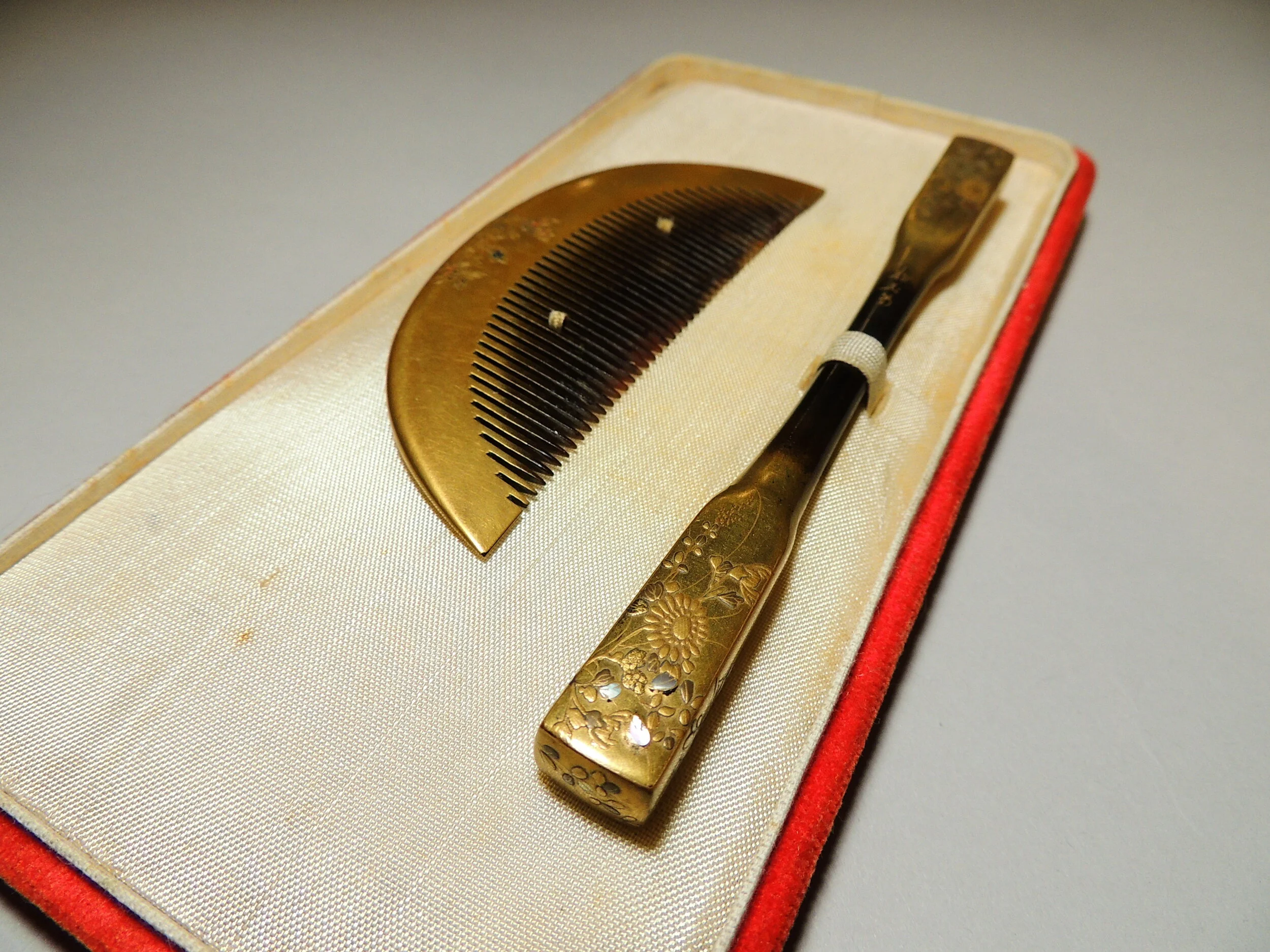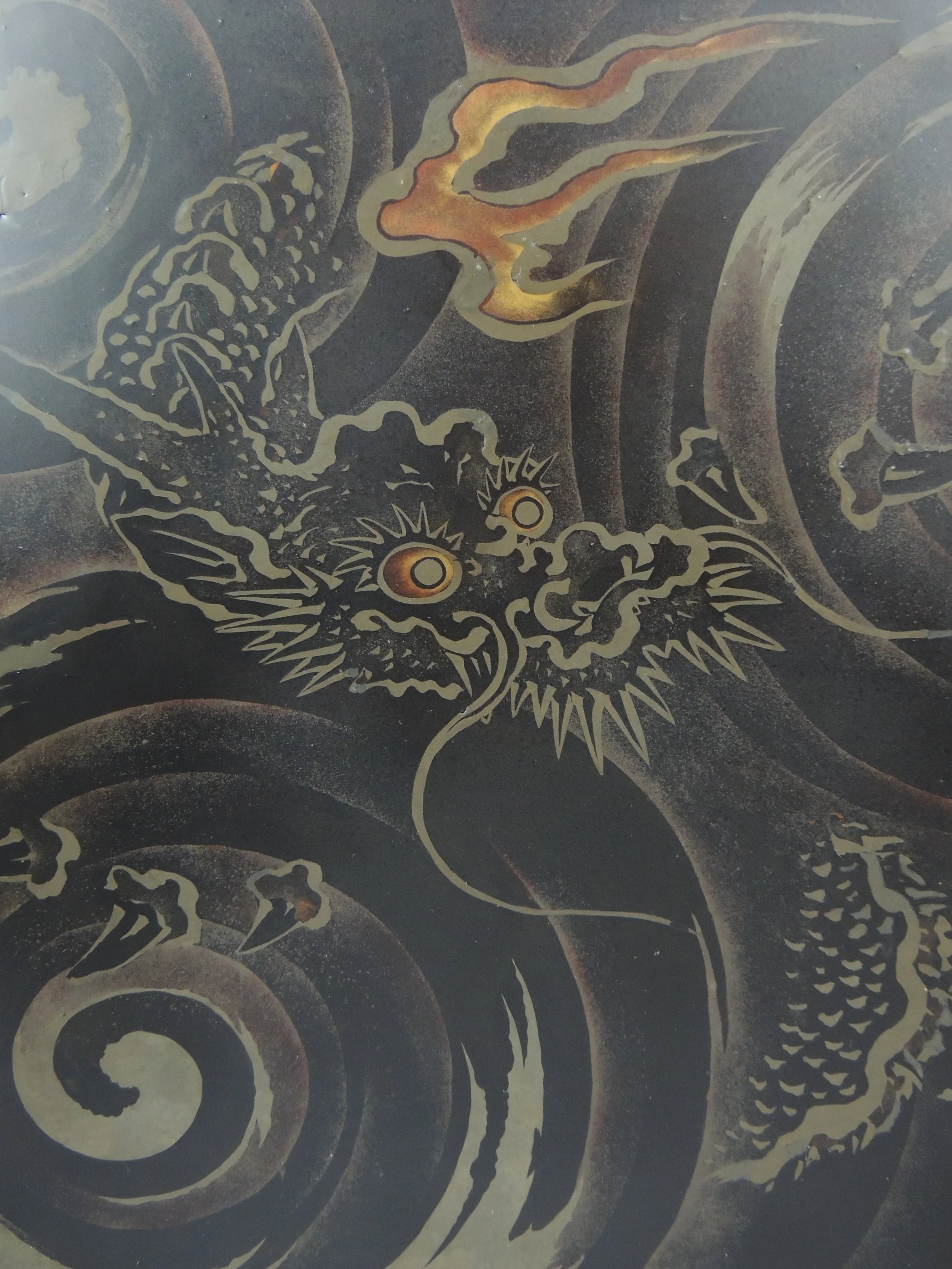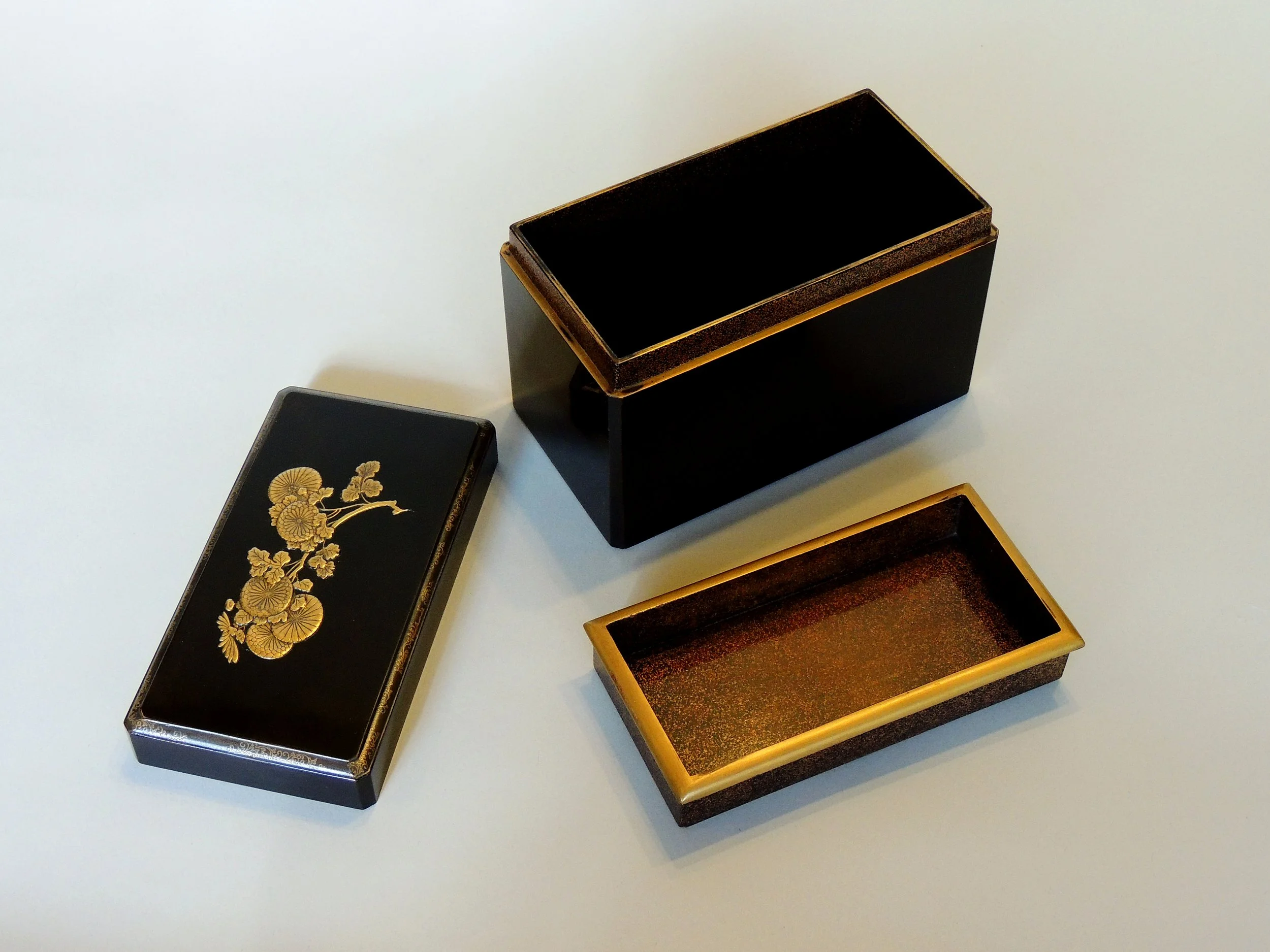Yoshitoshi one hundred views by moon light, The Moon's Four Strings
Anonymous
Edo period, 18/19th century
1615-1868
Bunko Box
A bunko paper box depicting a bamboo screen window and Biwa instrument. Gold and silver takamakie on a roiro ground interior in nashiji. The moon can be seen casting its light through the bamboo screen in silver lacquer with a beautifully wood grained Biwa in togidashi sitting on a black ground.
Unsigned
304mm x 223mm x 56mm
This bunko box could be a reference to Semimaru, he was a tenth-century blind poet and musician of noble birth. He mastered the arts while having a melancholy existence making him a popular subject of theatre productions centuries later. A well-known print by Yoshitoshi shows him here tuning a string on a biwa under the moonlight.










